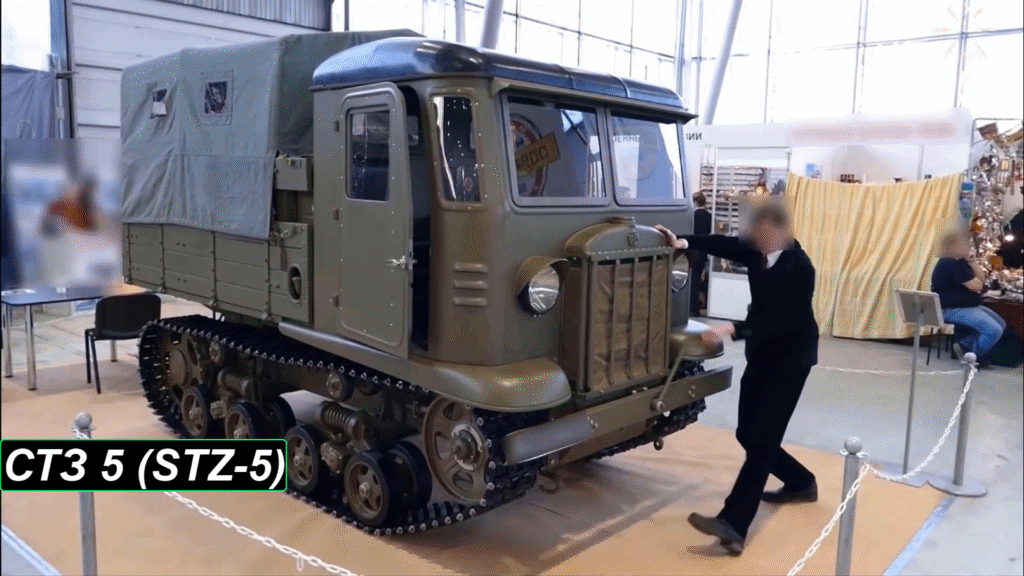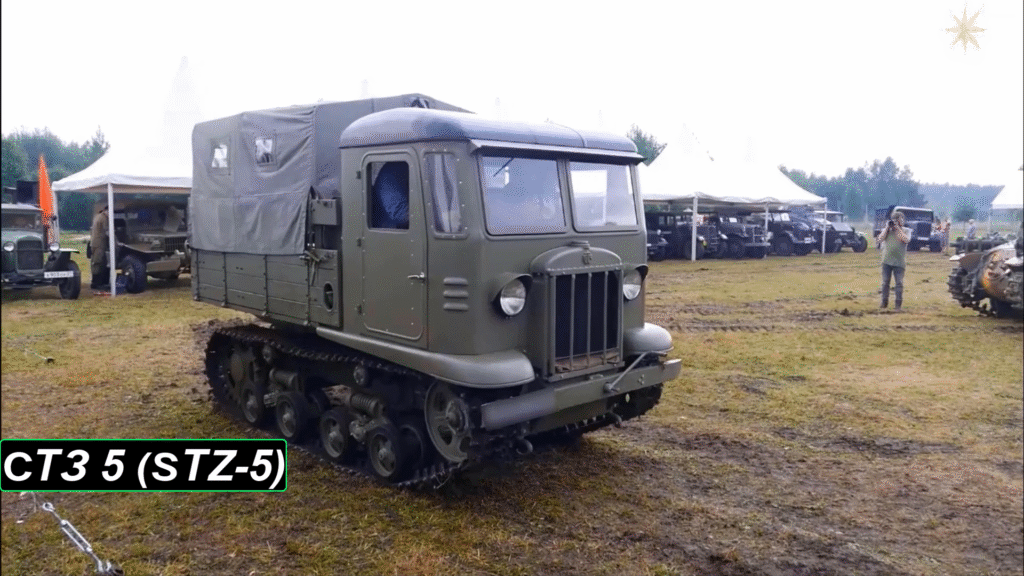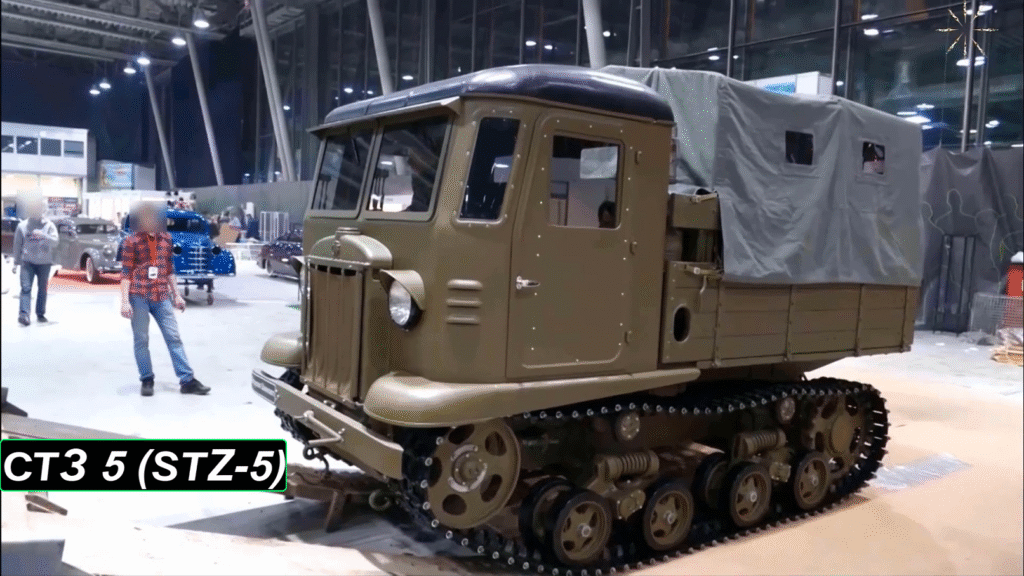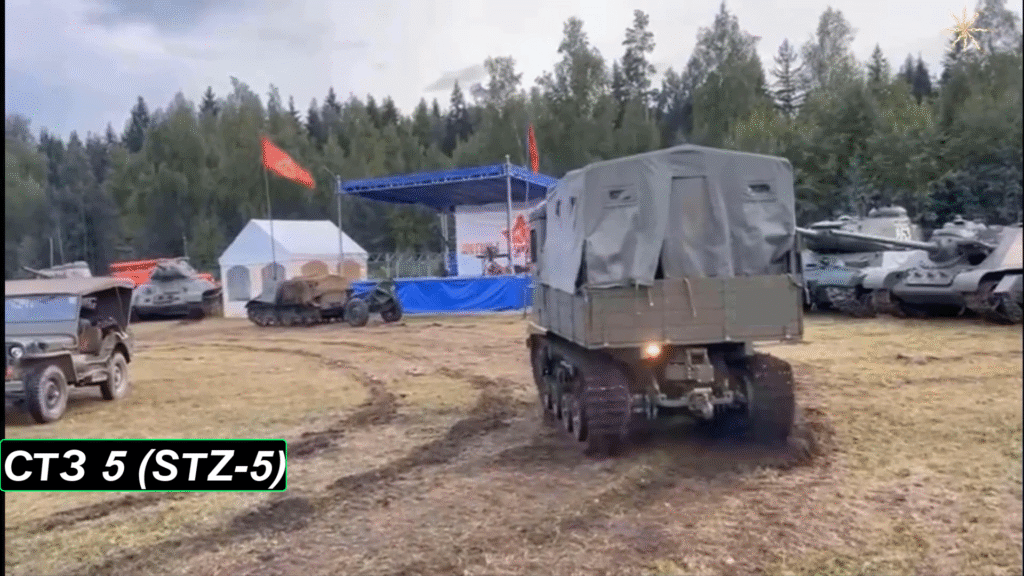
Explore the legacy of the STZ-5 artillery tractor, a key Soviet military vehicle used in World War II. Learn about its specs, uses, and lasting impact.
Introduction to the STZ-5 Artillery Tractor
The STZ-5 artillery tractor stands as a powerful symbol of Soviet ingenuity during the early 20th century. Designed for hauling heavy artillery across rough terrain, this tracked vehicle played a pivotal role in military logistics during World War II. With its rugged build and dependable mechanics, the STZ-5 demonstrated that even under pressure, simplicity and strength could win battles.
Historical Background and Development
The STZ-5 was produced by the Stalingrad Tractor Plant (STZ), one of the USSR’s primary military-industrial hubs. Developed in 1937, the tractor was intended to serve dual roles—both military and agricultural.

During its production run from 1937 to 1942, over 9,900 units were built. Its main job: towing heavy artillery, particularly 76mm and 122mm field guns, and transporting personnel or supplies in challenging environments.
Technical Specifications and Performance
Engine and Drivetrain

- Engine: ZIS-5 4-cylinder petrol engine
- Horsepower: ~50 hp
- Max Speed: 25 km/h (road), ~10–15 km/h (off-road)
- Fuel Range: 150–200 km
Design Features
- Track Suspension: Rigid, leaf-spring
- Weight: ~5,200 kg (11,464 lbs)
- Towing Capacity: Up to 8 tons
- Cab Design: Closed cabin with minimal controls
Its simplicity was its strength. Soldiers could easily repair it in the field with basic tools.
Military Applications During World War II
The STZ-5 was a logistical lifeline for Soviet forces, often used to:

- Tow large artillery pieces
- Transport troops and ammo
- Traverse muddy, icy, or rugged battlefield terrain
Despite its strengths, it had limitations:
- Low speed made it vulnerable during retreats
- No armor protection
- Inefficient fuel consumption under heavy loads
Still, its reliability outweighed these flaws in many combat scenarios.
Comparison with Other WWII Tractors
| Model | Country | Speed | Towing Capacity | Use Case |
|---|---|---|---|---|
| STZ-5 | USSR | ~25 km/h | 8 tons | Artillery Towing |
| Sd.Kfz. 11 | Germany | ~50 km/h | 3 tons | Infantry Support |
| M4 High-Speed Tractor | USA | ~56 km/h | 6–7 tons | Anti-Aircraft, Field |
Compared to its counterparts, the STZ-5 offered ruggedness but lagged in speed and comfort.
Civilian and Industrial Uses Post-War
After World War II, many STZ-5 units were adapted for agricultural use in the Soviet Union. They plowed fields, transported hay and machinery, and served in forestry and mining operations in remote areas like Siberia.

Its durable track system allowed it to reach areas inaccessible to wheeled vehicles.
Engineering and Mechanical Design
The STZ-5 featured:
- A basic transmission with minimal moving parts
- Tracks built for deep snow and mud
- Simple leaf-spring suspension for field repairs
Though it lacked advanced hydraulics or shock absorption, it was easy to maintain even in freezing temperatures.
Strengths and Weaknesses
Strengths:
- Durable, easy to maintain
- Capable of hauling large artillery
- Excellent off-road capabilities
Weaknesses:
- Very slow
- No protection for the crew
- High fuel consumption
Preservation and Restorations Today
Today, restored STZ-5 units can be found in:
- Russian and Eastern European military museums
- Private collections
- World War II reenactment groups
Collectors prize these vehicles for their historical value and mechanical simplicity.
Availability and Collectibility
Due to limited surviving numbers, a restored STZ-5 can sell for $25,000 to $50,000 depending on condition and authenticity.
Collectors often look for:
- Original parts
- Working track systems
- Authentic Soviet military markings
STZ-5 in Popular Media and War Games
The STZ-5 has appeared in:
- Video games like Men of War and Company of Heroes 2
- Documentary features on channels like History and RT
Its unique design makes it a favorite for portraying WWII Eastern Front scenarios.
Lessons from Its Design in Modern Military Vehicles
Many design principles from the STZ-5 carry over into modern military vehicles:
- Prioritizing reliability over luxury
- Designing for easy field maintenance
- Building for multi-environmental use
Russian military engineering still reflects this utilitarian mindset.
- Detailed model kit in scale 1:35.
- The high-quality kit from Zvezda must be assembled by yourself.
- The independent assembly is accompanied by step or illustrated assembly instructions (English language not guaranteed). …
Expert Reviews and Historical Analysis
Military historians note that the STZ-5 was:
“A backbone of Soviet artillery mobility during the harshest years of WWII.”
Engineers admire its use of minimal materials to achieve maximum effectiveness in the field.

FAQs about STZ-5 Artillery Tractor
Q1: What kind of fuel did the STZ-5 use?
It used standard gasoline (petrol).
Q2: How many were produced during WWII?
Approximately 9,900 units.
Q3: Was it armored?
No, it had no armor—purely a utility tractor.
Q4: Could it carry troops?
Yes, in addition to towing artillery, it could transport soldiers and equipment.
Q5: Is it still used today?
No, but some are preserved in museums or by collectors.
Q6: How fast could it go?
Top speed was around 25 km/h on roads.
Conclusion
The STZ-5 artillery tractor may not have been the flashiest vehicle of World War II, but it was a workhorse that carried the Red Army through some of its most desperate battles. Its rugged, no-nonsense design remains a lesson in utilitarian engineering—proof that in war, function often trumps form.

